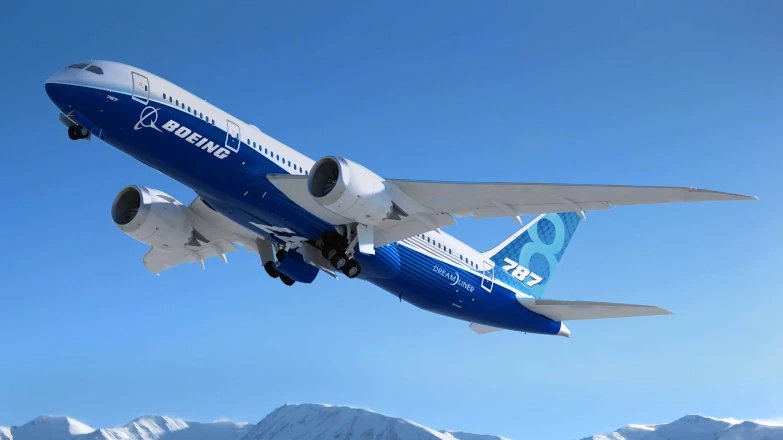
Boeing 787-8 Dreamliner Details
Introduction to the 787 8 Dreamliner
The Boeing 787-8 Dreamliner wide-body aircraft was developed by the American Boeing Corporation. Design work for the new airliner began long ago. 15 years ago, on 15 December 2009, the first Boeing 787-8 Dreamliner made its first flight in test mode, and flight tests were completed in the summer of 2011. The aircraft started to enter the airlines’ fleet in October of the same year.
The Boeing 787-8 was designed to replace the popular Boeing 767-300ER. The new model is capable of carrying from 234 to 296 passengers. The aircraft is able to cover a distance of up to 15,200 kilometres. As a rule, the airliner is used for transcontinental flights. The wingspan of the 787-8 is 60.1 metres, and the length of the airliner itself is 56.7 metres. The aircraft is equipped with an arrow-shaped wing, under which two turbojet engines are placed. Specially for the airliner General Electric produced the GEnx-1B power unit. An alternative option was the Trent-1000 engine produced by Rolls-Royce.
A significant part of 787-8 Dreamliner elements is made of lightweight composite materials based on carbon fibre. They are used in the production of the load-bearing part, fuselage, tail and hatches. The use of modern materials allowed to significantly reduce the weight of the structure, increase flight duration and passenger capacity. At the same time, the “consumption” of fuel has been significantly reduced.
Military developments were applied in the cockpit Boeing 788. Thus, head-up displays (HUD) appeared on the windscreen. They display all the necessary information: from the course to the overboard temperature. The manufacturer plans to incorporate FLIR (Forward looking infrared) thermal sensing technology into the latest system. It will allow pilots to “see through the clouds” thanks to infrared sensors and cameras.
Key Dates in Boeing 788 History
April 26, 2004: Boeing announces the launch of a development programme for a new passenger aircraft called the Dreamliner, which will later be designated the Boeing 788.
April 2005: Boeing begins active development of the 787 8 Dreamliner concept, including the use of new materials and technologies to increase fuel efficiency and comfort.
8 September 2007: The first Boeing 787-8 Dreamliner prototype is officially unveiled at Boeing’s Everett, Washington, USA plant.
On December 15, 2009, following a succession of setbacks attributable to technical challenges and modifications in manufacturing procedures, the inaugural commercially operational Boeing 787-8 embarks on its maiden flight with passengers aboard.
Subsequently, on October 26, 2011, Boeing proudly presents its premier production model of the 787-8 Dreamliner to All Nippon Airways (ANA), marking a significant milestone in the aircraft’s deployment and enhancing ANA’s fleet capabilities.
9 July 2013: for the first time ever, Boeing introduces a larger version of the Boeing 788, known as the 787-9 Dreamliner, which has greater range and capacity.
March 2014: Boeing announces development of an enhanced version of the Dreamliner called the 787-10, which is designed to carry more passengers over shorter distances.
31 March 2018: Boeing completes assembly of the first production 787-8 Dreamliner at its plant in Charleston, South Carolina, USA.
Mid-2018: Boeing begins production and delivery of the 787-8 Dreamliner to various airlines around the world, becoming one of the most sought-after and advanced passenger airliners in the world.
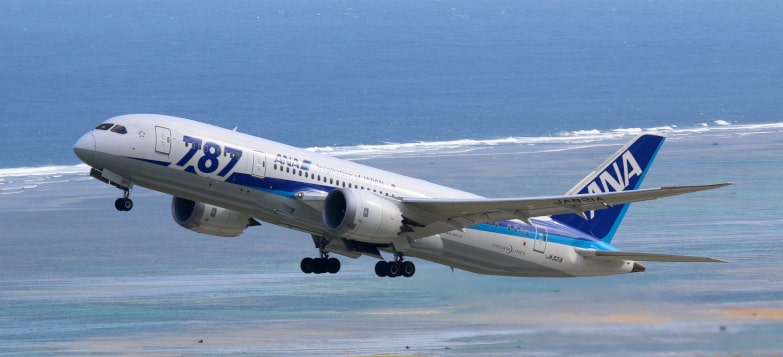
In January 2020, Boeing faced a pivotal moment as it temporarily ceased the assembly lines of its esteemed Dreamliner series, including the innovative 787-8 model, across its manufacturing hubs in Washington state and South Carolina. The decision was necessitated by a myriad of challenges and disruptions that had accumulated within the intricate web of the production chain.
By May 2020, amidst cautious optimism, the aerospace giant commenced a carefully orchestrated revival of 787 production at its Charleston, South Carolina facility. This marked a significant step forward in navigating the complexities of a rapidly evolving global landscape while reaffirming Boeing’s commitment to advancing aviation excellence.
On September 2022, and Boeing emerges with renewed vigor and determination. With an unwavering focus on continuous improvement, the company unveils a series of transformative changes to its production processes and design methodologies for the revered 787 aircraft family.
Boeing 787-8 Dreamliner Plane Specifications
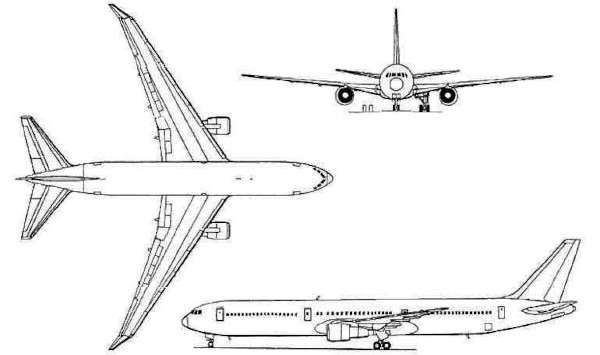
Passenger Cabin
| Crew | 2 pilots |
| Number of passengers | 242 |
Dimensions
| Length (m) | 56.69 |
| Height (m) | 17.00 |
| Wingspan (m) | 60.17 |
| Wing area (sq. m) | 325.0 |
| Fuselage width (m) | 5.77 |
| Cabin width (m) | 5.49 |
Weights
| Operating empty weight (kg) | 118,000 |
| Max. takeoff weight (kg) | 227,930 |
| Max. landing weight (kg) | 172,000 |
| Max. zero fuel weight (kg) | 161,000 |
| Cargo compartment volume (cu. m) | 124.5 |
Performance Data
| Range (km) | 13,620 |
| Cruising speed (km/h) | 903 |
| Maximum speed (km/h) | 945 |
| Takeoff distance (m) | 2600-3100 |
| Engines | 2 × General Electric GEnx-1B or 2 × Rolls-Royce Trent 1000 |
| Engine thrust (kN) | 2 × 280 |
| Maximum fuel capacity (liters) | 126,000 |
| Maximum cruising altitude (m) | 13,100 |
Boeing 787-8 Seat Map
The number of seats in the cabin depends on the Boeing modification. The basic version of the Boeing 787-8 Dreamliner seating scheme includes: 22 business class seats, 232 economy class seats.
Boeing 787-8 seat map arrangement by rows: in business class – 1-2-1, in economy class – 3-3-3.

Different airlines can change seats in Boeing 787-8 at will. For example, for business class use a 2-2-2 row layout, for economy class 2-4-2 or a single-class cabin.

Business Class
Boeing 787-8 Dreamliner Business Class offers passengers a high level of comfort and service. This class typically includes wide seats that can be converted into fully flat beds, allowing passengers to relax and sleep during long flights.
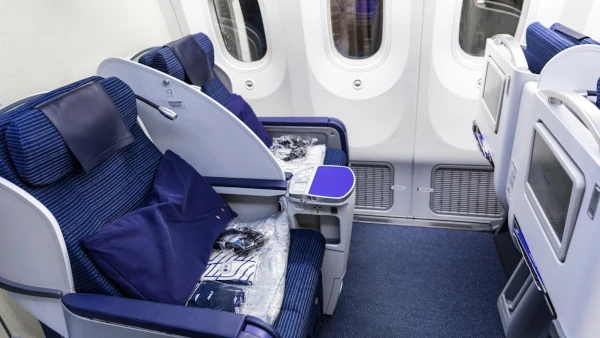
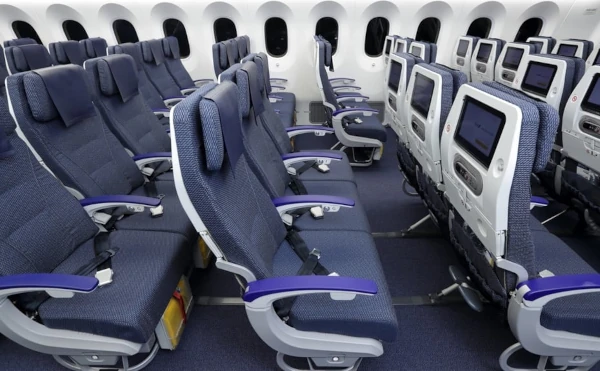
Economy
Economy class is usually located at the rear of the aircraft and offers passengers the most affordable amenities and services.
The Boeing 787-8 Dreamliner seat map of economy class passengers can vary, but typically the seats are arranged in rows running from side to side. The most typical seating configuration is 3-3-3.
Each economy class seat usually has its own monitor on which passengers can watch films and TV shows, as well as run entertainment apps. The seats also have adjustable headrests and armrests for passenger comfort.
787 8 Dreamliner Seat Plan Comparison
| Airline | Configuration | Total Seats |
|---|---|---|
| Qatar Airways Boeing 787-8 | Business / 1-2-1 Economy / 3-3-3 |
254 |
| United Boeing 787-8 | Polaris / 2-2-2 Economy Plus / 3-3-3 Economy / 3-3-3 |
219 |
| American Airlines Boeing 787-8 | Business / 1-2-1 Premium Economy / 2-3-2 Main Cabin Extra / 3-3-3 Main Cabin / 3-3-3 |
234 |
| Air Canada Boeing 787-8 | Business / 1-2-1 Premium Economy / 2-3-2 Economy / 3-3-3 |
255 |
| British Airways Boeing 787-8 | Club World / 2-3-2 World Traveller Plus / 2-3-2 World Traveller / 3-3-3 |
214 |
| China Southern Boeing 787-8 | First / 1-2-1 Business / 2-2-2 Economy / 3-3-3 |
228 |
| Xiamen Airlines Boeing 787-8 | Polaris / 2-2-2 Economy Plus / 3-3-3 Economy / 3-3-3 |
237 |
| Ethiopian Airlines Boeing 787-8 | Cloud Nine Business / 2-2-2 Economy / 3-3-3 |
270 |
| TUI Boeing 787-8 | Premium / 2-3-2 Economy / 3-3-3 |
288 |





